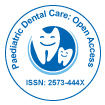Our Group organises 3000+ Global Conferenceseries Events every year across USA, Europe & Asia with support from 1000 more scientific Societies and Publishes 700+ Open Access Journals which contains over 50000 eminent personalities, reputed scientists as editorial board members.
Open Access Journals gaining more Readers and Citations
700 Journals and 15,000,000 Readers Each Journal is getting 25,000+ Readers
Indexed In
- RefSeek
- Hamdard University
- EBSCO A-Z
Useful Links
Recommended Journals
Related Subjects
Share This Page
Jacek Tomczyk

Jacek Tomczyk
Professor
Department of Biological Anthropology
Wyszynski University
Poland
Biography
Jacek Tomczyk is the professer in the department of biological Anthropology Cardinal Stefan Wyszynski University,Warsaw. In the year of (2004) appointed as head of the department of Cardinal Stefan Wyszynski University,In (2008) Member of research staff in the Department of Descriptive and Clinical Anatomy, Medical University in Warsaw,In (2009) Member of research staff in the Department of Department of Pediatric Dentistry, Medical University in Warsaw.From the year (2007-2012) Member of Anthropological Committee Polish Academy of Sciences. He is authored and co-authored over 45 peer-reviewed publications.
He publishes his works in national and international journals (e.g. Archives of Oral Biology, American Journal of Physical Anthropology .
His research interest includes dental morphology, periodontology, dental pathologies observe in modern and historical populations.
Research Interest
The main research interest relate to the relationship between the organism (the individual) and its living environment and changes in the area of masticatory system caused by environmental changes. Each organism has a specific sensitivity to the environmental stimuli and exhibits various adaptations to the environment. It means that in certain circumstances, the adaptive mechanisms can manifest themselves both in the bone tissue and teeth. This record is used by biologists (physical anthropologists) to assess the environmental conditions which affected and shaped the local populations. Such defects as a enamel hypoplasia, dental caries, periodontal diseases or some pathologies are important indicators of health and hygiene, the quality of nutrition and general living conditions. Innovative research idea was to determine the prevalence of pulp stones in the historical populations. Usually high prevalence of pulp stones is joined of the advanced age of the patients. However, conducted study showed a statistically significant relationship presence of pulp stones not with age of individuals, but rather with degrees of dental wear. In addition, we have shown that an important factor of pathological calcification of the pulp can be a diet with high levels of calcium. The important research was an identification of early stage of dental caries in archeological populations. Most of anthropological research in these analyses omits the earliest stages of dental caries. Current technology gives some devices (such as Diagnodent or VistaCam) to identify the early stages of dental caries. Along with the team, we undertook pioneering research on the possibility of using these devices in archeological finds.

 Spanish
Spanish  Chinese
Chinese  Russian
Russian  German
German  French
French  Japanese
Japanese  Portuguese
Portuguese  Hindi
Hindi 